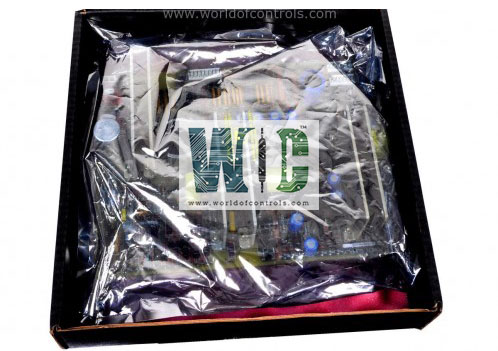SPECIFICATIONS
Part No.: IS230TBAIH4C
Manufacturer: General Electric
Product Type: TMR Analog I/O Assembly
Input span, transmitters: 1-5 V dc from 4-20 mA current input
Outputs: 24 V outputs provide 21 mA each connection
Size: 10.16 cm wide x 33.02 cm high
Number of channels: 12
Technology: Surface-mount
Availability: In Stock
Country of Manufacture: United States (USA)
Series: Mark VIe
Functional Description
IS230TBAIH4C is a TMR Analog I/O Assembly developed by GE. It is a part of Mark VIe control system. The Terminal Board for Analog Inputs (TBAI) provides convenient and versatile connectivity options for integrating analog input signals from the field devices to the I/O processors in various control systems. The TBAI features three DC-37 pin connectors that facilitate these connections. In TMR applications, the input signals are distributed to the three connectors (R, S, and T) on the TBAI. This triplex arrangement ensures that the I/O processors receive redundant input signals from multiple sources, enhancing the system's fault tolerance and reliability.
Features
- Simplex Configuration: For straightforward applications, the analog inputs can be connected using a single connector (JR1). This setup is ideal when redundancy or fault tolerance is not a critical requirement.
- TMR Configuration: For applications that demand high reliability and redundancy, the TMR (Triple Modular Redundancy) configuration is employed. This involves using all three connectors, namely R, S, and T, for connecting to the R, S, and T control channels in the I/O processors.
- Cable or Direct Connection: Allows flexibility in how the connections are made. Analog inputs can be connected through cables, which offers ease of installation and maintenance. Alternatively, for applications where direct and short connections are feasible, the analog inputs can be directly linked to the electronics.
- TMR Output Operation: The TMR outputs work in a synchronized manner to achieve redundancy. The output drivers on each connector (R, S, and T) combine their individual current outputs to create a total current output.
- Measuring Shunt for TMR Output: To determine the total current output accurately, a measuring shunt is integrated. This shunt provides a reference signal for measuring the combined current generated by the three connected output drivers.
Operation
- In a TMR system, analog inputs are distributed to three independent I/O controllers, typically VAIC (Voter Analog Input Controller) or PAIC (Programmable Analog Input Controller). These controllers act as redundant channels for processing and voting analog input signals, ensuring reliability even in the event of failures.
- Each I/O controller supplies 24 V dc power to the transducers providing analog input signals. To ensure redundancy and stability in power supply, the 24 V dc power is diode shared on the terminal board. This configuration guarantees continuous power to the transducers, even if one I/O controller fails, by relying on the other two controllers.
- Analog current outputs from each I/O controller are combined on the terminal board. This centralizes the redundant analog output signals. To accurately determine the actual output current, a series resistor is included in the circuit. Each output current passing through this resistor generates a voltage drop proportional to the current flow, which is then fed back to each I/O controller.
- Each I/O controller receives the three voltage signals corresponding to the output currents. To achieve a voted or redundant output, the controllers implement a voting algorithm. This algorithm calculates the median value of the three currents, known as the voted middle value. Choosing the median ensures robustness against outliers or transient faults affecting one controller, ensuring reliable and accurate output current.
- The voted middle value output, determined by the voting algorithm, is utilized for further processing or control actions within the TMR system. This redundant approach guarantees stable and accurate operation, even in challenging or safety-critical environments.
- TMR architecture is widely adopted in industries where high reliability and fault tolerance are crucial. By providing redundancy and fault tolerance, TMR systems ensure uninterrupted operation and enhance safety in critical applications.
World of Controls has the most comprehensive collection of GE Mark VIe components. Please contact WOC as soon as possible if you require any extra information.
Frequently Asked Questions
What is IS230TBAIH4C?
It is a TMR Analog I/O Assembly developed by GE
Can I integrate various types of sensors and transmitters into the terminal board's analog inputs?
Yes, The terminal board's flexibility allows seamless integration of various types of sensors and transmitters. Whether it's voltage inputs, externally powered transmitters, or different configurations of two, three, or four-wire transmitters, the board can handle diverse measurement needs.
Can I use the terminal board in safety-critical applications?
The terminal board's reliability, TMR support, and noise suppression capabilities make it suitable for safety-critical applications where accurate and redundant measurements are essential.
What is the measuring shunt, and how does it work?
The measuring shunt is a critical component in TMR applications. It helps determine the total current output generated by the three connected output drivers. By measuring this combined current accurately, the terminal board ensures precise control and redundancy in the analog output signals, enhancing system reliability.
